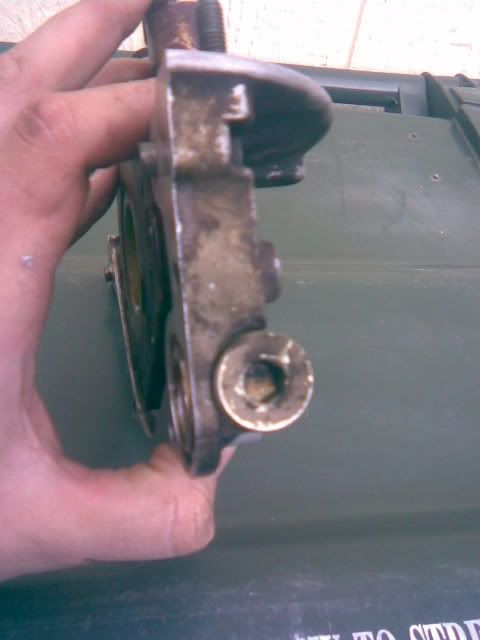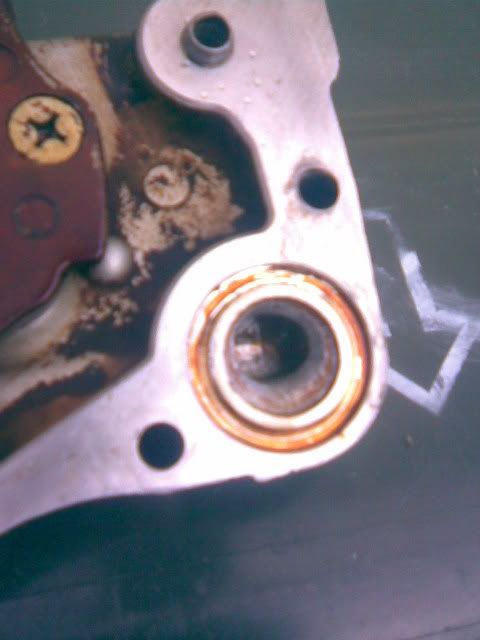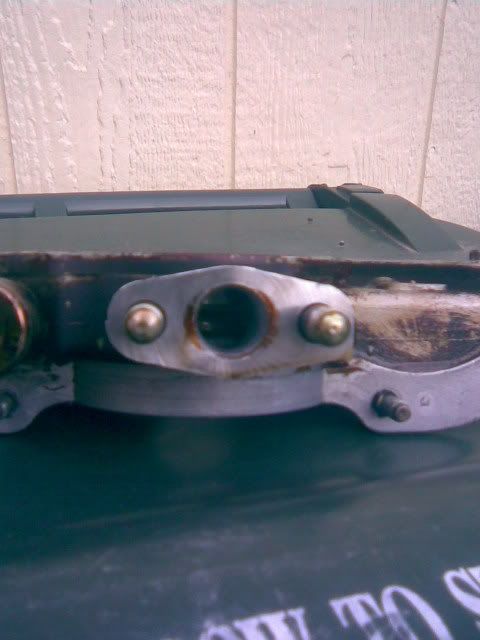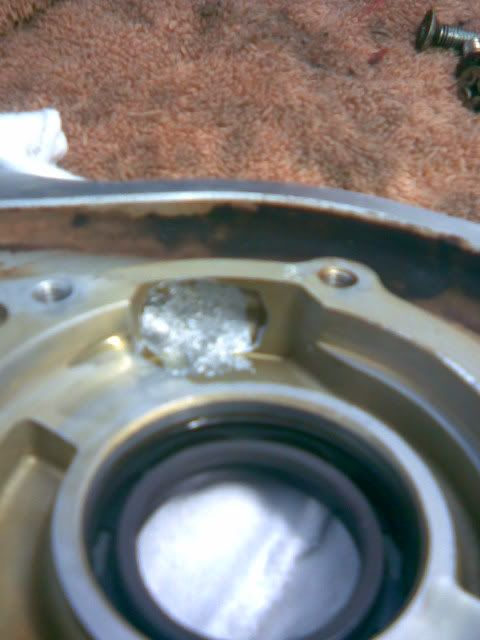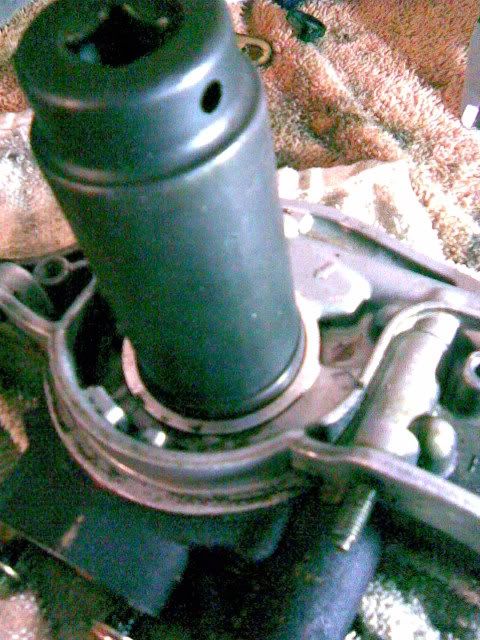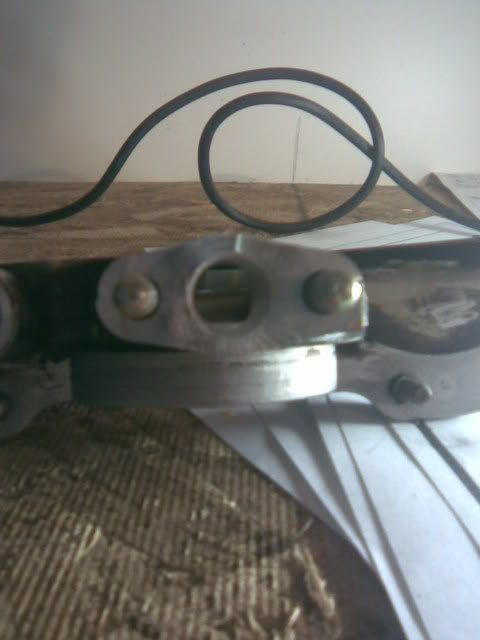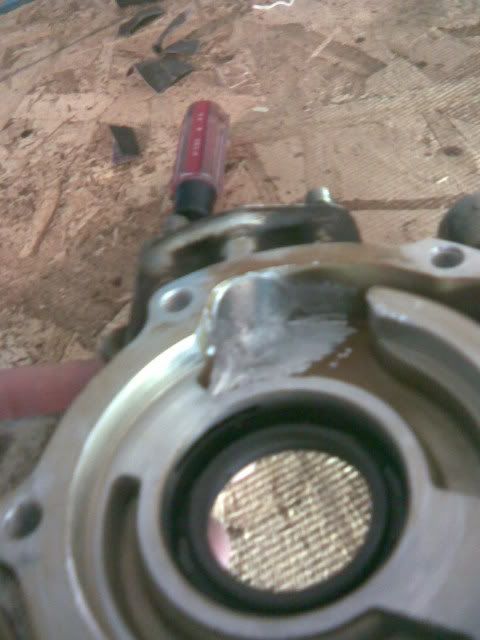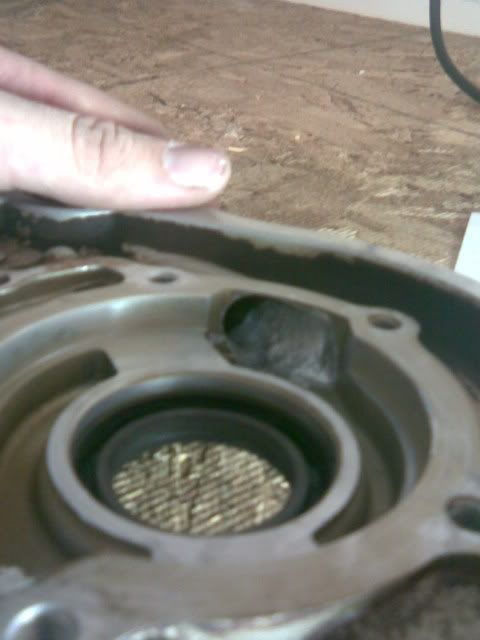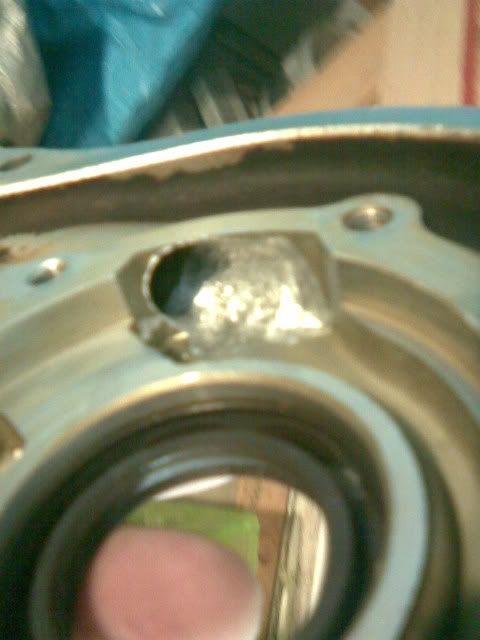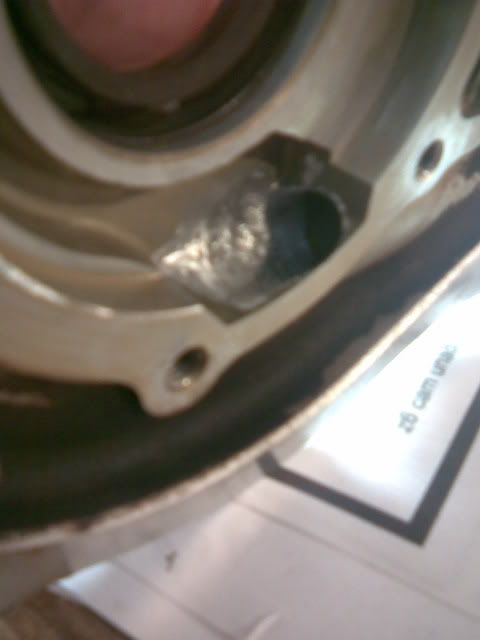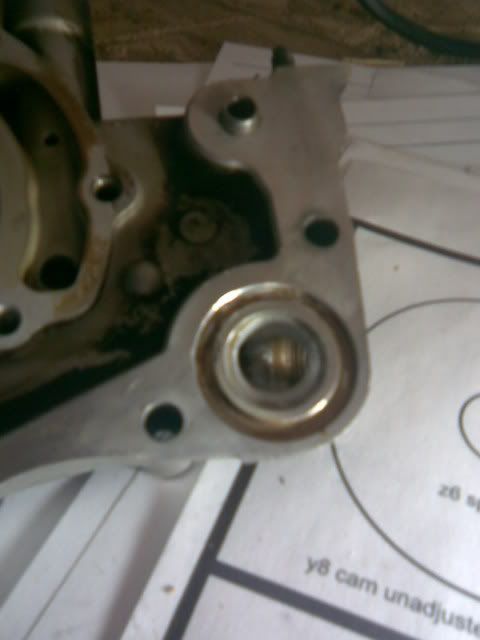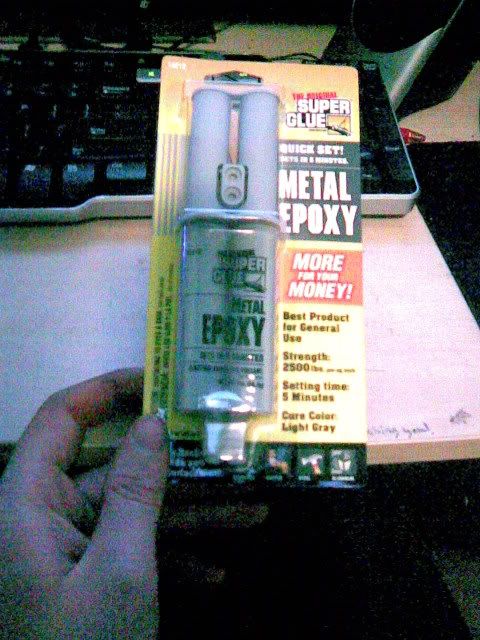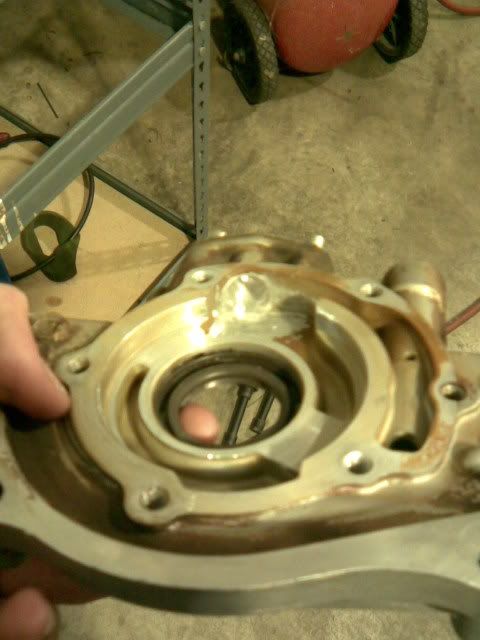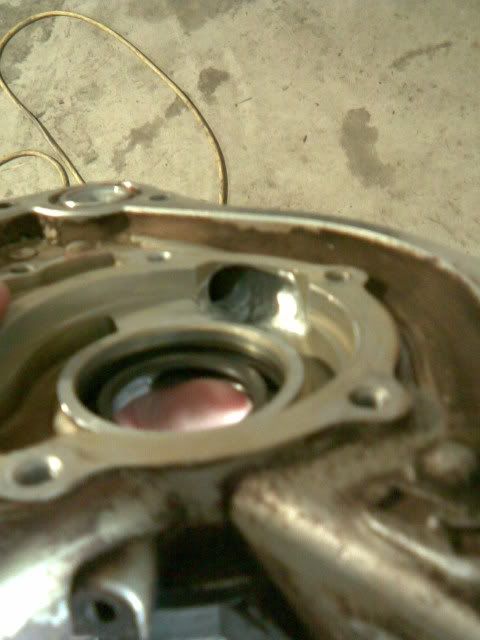Shimming the oil pump
First off, i allways inspect the oil pump before i do any modifications If the oil pump is bad, its not worth doing all that work to find that out in the end. Sorry for the crappy pics guys.
So first you take off the Philips headed bolts that hold down the rotor cover.Im using my impact driver to remove them, its the BEST! 35 dollars ive ever spent.
![Image]()
After that you measure the rotors per honda spec. this one was on the tighter side of spec and everything looked good.
![Image]()
![Image]()
Next you remove the hex head bolt on top of the oil pump next to the pickup tube inlet. this is where the pressure bleed off valve is when the pressure gets to a certain point, this piston lifts and limits the ammount of pressure that is produced. Be carefull when removing this, the spring is quite strong.
![Image]()
Next you want to get your shim, with an ID of .30 and OD that matches the diameter of the piston (i didnt measure sorry). I found a washer that the OD was correct, but the ID was too small, and the thickness was .048. The thickness of the shim you are looking for is to be between .025 - .035 thousanths, that will give you an oil pressure of about 80-100 psi at 7000 rpm's (this is even more important on turbo and high rpm engines).
I got the washer out of a harbor freight multi pack thats under 5 dollars its under the caliper in the picture.
![Image]()
Next i bored out the ID of the washer with my die grinder. Then since its so small i couldnt use a grinder and hold it, because then it wouldnt be flat. So i took the end of one of my screwdrivers that im going to return to sears and ground the washer down on my concrete floor. Slowly it took metal off until i got down to my desired thickness. (As seen in the second picture, the differences between the way they come and the finished product).
![Image]()
![Image]()
Before you reinstall make sure the shim sits flat and level on the bolt, then clean the piston and the passage out, then coat everything in engine oil. (If your going to be porting as well, leave this out for now, it will need to be cleaned).
![Image]()
And thats it!
First off, i allways inspect the oil pump before i do any modifications If the oil pump is bad, its not worth doing all that work to find that out in the end. Sorry for the crappy pics guys.
So first you take off the Philips headed bolts that hold down the rotor cover.Im using my impact driver to remove them, its the BEST! 35 dollars ive ever spent.

After that you measure the rotors per honda spec. this one was on the tighter side of spec and everything looked good.


Next you remove the hex head bolt on top of the oil pump next to the pickup tube inlet. this is where the pressure bleed off valve is when the pressure gets to a certain point, this piston lifts and limits the ammount of pressure that is produced. Be carefull when removing this, the spring is quite strong.
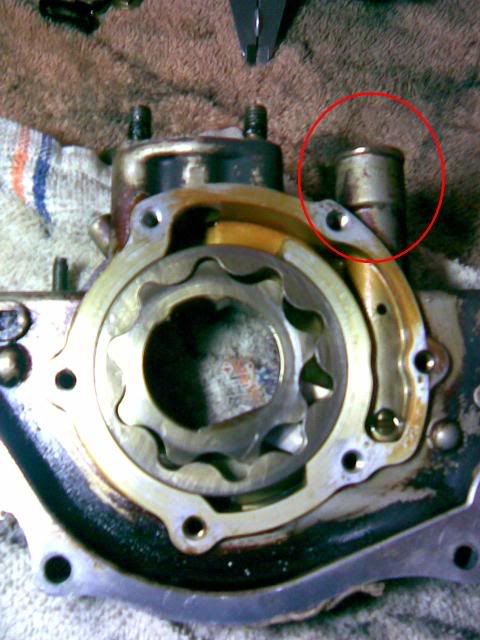
Next you want to get your shim, with an ID of .30 and OD that matches the diameter of the piston (i didnt measure sorry). I found a washer that the OD was correct, but the ID was too small, and the thickness was .048. The thickness of the shim you are looking for is to be between .025 - .035 thousanths, that will give you an oil pressure of about 80-100 psi at 7000 rpm's (this is even more important on turbo and high rpm engines).
I got the washer out of a harbor freight multi pack thats under 5 dollars its under the caliper in the picture.
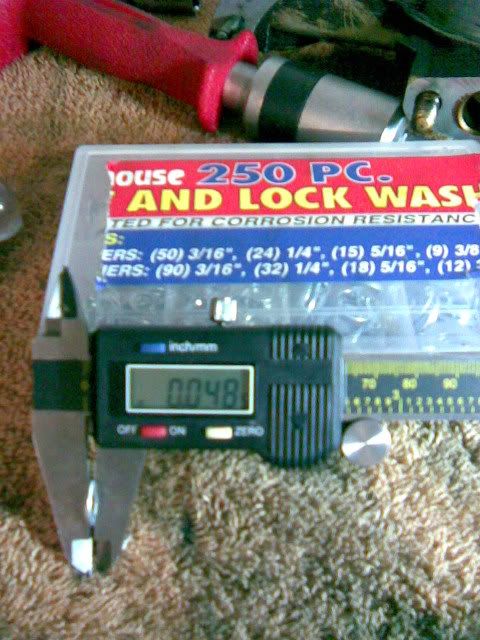
Next i bored out the ID of the washer with my die grinder. Then since its so small i couldnt use a grinder and hold it, because then it wouldnt be flat. So i took the end of one of my screwdrivers that im going to return to sears and ground the washer down on my concrete floor. Slowly it took metal off until i got down to my desired thickness. (As seen in the second picture, the differences between the way they come and the finished product).
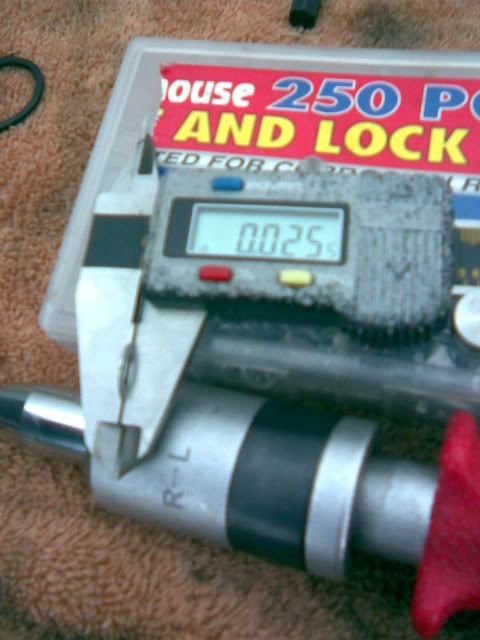

Before you reinstall make sure the shim sits flat and level on the bolt, then clean the piston and the passage out, then coat everything in engine oil. (If your going to be porting as well, leave this out for now, it will need to be cleaned).
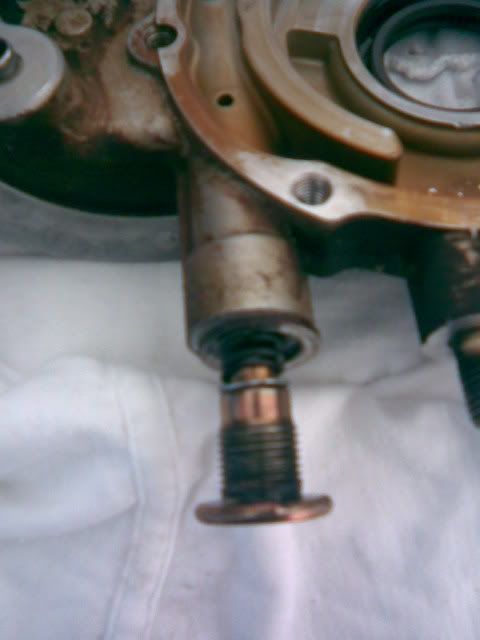
And thats it!


